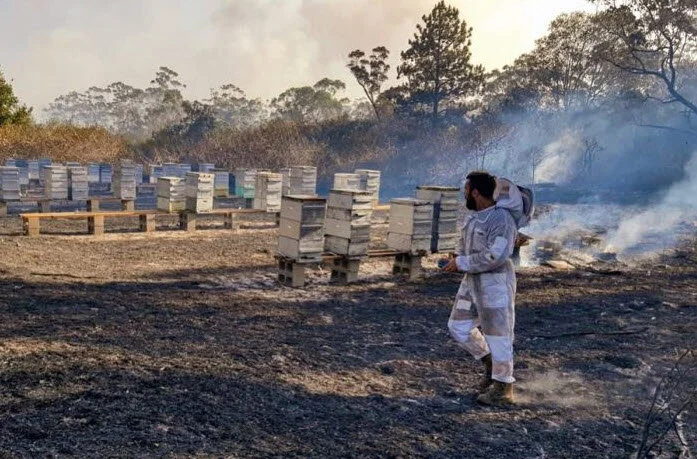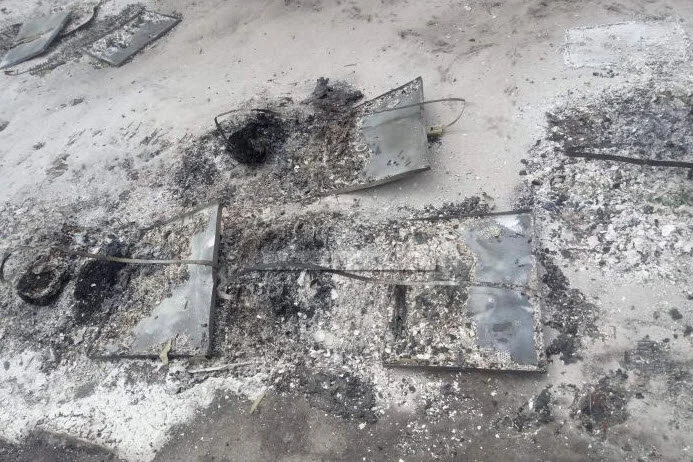Spring is fast approaching and if you are a gardener like me you are thinking about how quickly you can get your hands in the soil and some plants in the ground.
In Southern California where Golden Glow Gardens beehives are located, we are lucky to have a climate where our bees can forage for pollen and nectar almost year-round. Even in the coldest month of January, our native rosemary’s purple blossoms are filled with our bees.

Being a beekeeper, I always think about how I can include more bee friendly plants and flowers in my garden to make a sanctuary for honeybees and other beneficial pollinators. This is as easy as planting a small cluster of native wildflowers, herbs or a flowering vegetable garden. Keep it natural, organic, chemical free, let it continue to flower and you will be providing a vital food source for your local bee population. As an added bonus your vegetables will thrive from being well-pollinated and you’ll have a bumper crop of veggies at harvest time. Here are some simple guidelines I follow.
Choose plants that attract bees – Bees love native wildflowers, flowering herbs, berries and many flowering fruits and vegetables. While bee balm is the flower that may spring to mind first, depending on which growing zone you live in, there are many other plants that guaranteed to attract honeybees, and keep them happy at your property.
Some honeybee favorites plants (listed alphabetically by kind)
Annuals
Asters
Calliopsis
Clover
Cosmos
Dandelions
Marigolds
Poppies
Sunflowers
Zinnias
Perennials
Buckwheat
Buttercups
Clematis
Cosmos
Crocuses
Dahlias
Echinacea
English Ivy
Foxglove
Geraniums
Germander
Globe Thistle
Hollyhocks
Hosta
Hyacinth
Rock Cress
Roses
Sedum
Snapdragons
Snowdrops
Squills
Tansy
Tulips and all bulbs
Yellow Hyssop
Garden Plants
Blackberries
Broccoli
Cantaloupe
Cucumbers
Gourds
Melon
Peppers
Pumpkins
Raspberries
Squash
Strawberries
Tomatoes
Watermelons
Wild Garlic
Witch Hazel
Herbs
Bee Balm
Borage
Calendula
Catnip
Chives
Coriander/Cilantro
Fennel
Lavender
Mints
Oregano
Rosemary
Sage
Thyme
Shrubs
Blueberry and all berries
Butterfly Bush
Button Bush
Honeysuckle
Indigo
Privet
Trees
Alder
American Holly
Basswood
Black Gum
Black Locust
Buckeyes
Catalpa
Eastern Redbud
Fruit Trees (especially
Crabapples)
Golden Rain Tree
Hawthorns
Hazels
Linden
Magnolia
Maples
Mountain Ash
Sycamore
Tulip
Poplar
Willows
Avoid using herbicides or pesticides in the bee garden. They not only can be toxic to bees but also are best not introduced to children or adults that visit your garden. Ladybugs, beneficial nematodes, spiders, and praying mantises will naturally keep pest populations in check
Skip the Highly Hybridized Varieties. These plants have been bred not to produce seeds, so they also produce very little pollen for bees.
Group the same plants together – Try to plant at least one square yard of the same plant together to make a perfect bee attractor. But if you are short on space planting just a few wildflowers or herbs in a planter or window box is all that’s needed to provide more foraging habitat for the honeybee.
Pick plants with long blooming cycles – Or choose plants with successive blooms. This way the bees will keep coming back again and again. A seed kit like this makes attracting bees to your garden easy.
Select Single Flower Top Plants such as daisies and marigolds, rather than double flower tops such as double impatiens. Double-headed flowers look luxurious, but produce much less nectar and are so dense with petals, they make it more difficult for bees to access the pollen stamens deep inside the flower.
Provide a fresh water source – Bees need a place to get fresh, clean water. A pond, a fountain, even a swimming pool (especially if it is low or no chlorine fresh water), a waterfall or water feature. Fill a shallow container of water with pebbles or twigs for the bees to land on while drinking. Make sure to maintain the container full of fresh water to ensure that they know they can return to the same spot every day in your bee garden. A bird bath with plants or stones for the bees to rest on, a slowly dripping hose, or almost any shallow water source will work.
Mind standing fresh water for mosquito breeding though!
(as an aside on this topic, I highly recommend a fascinating book, “The Path Between Two Seas,” about the building of the Panama Canal. Talk about the dangers of mosquitoes in standing water!)


